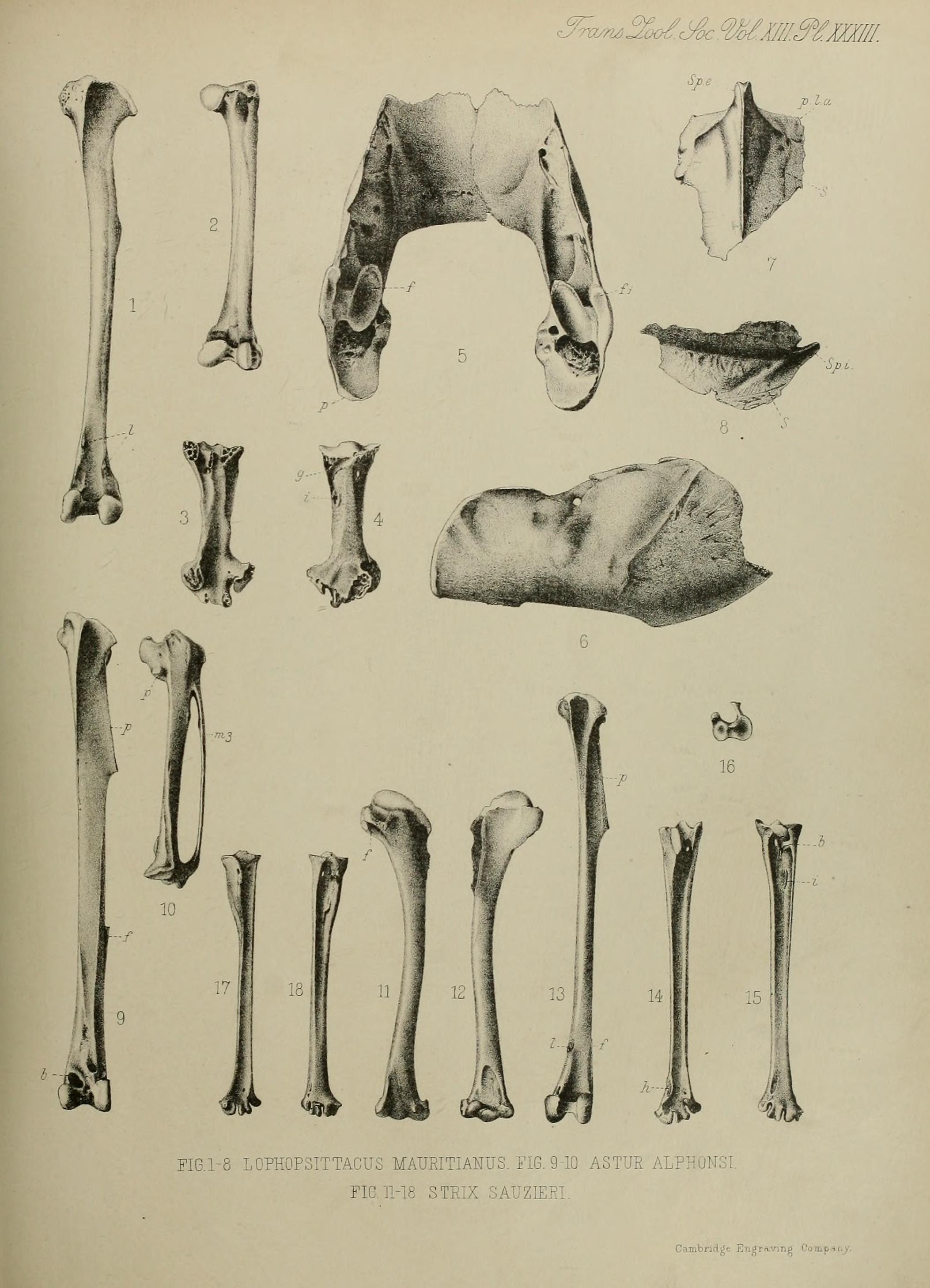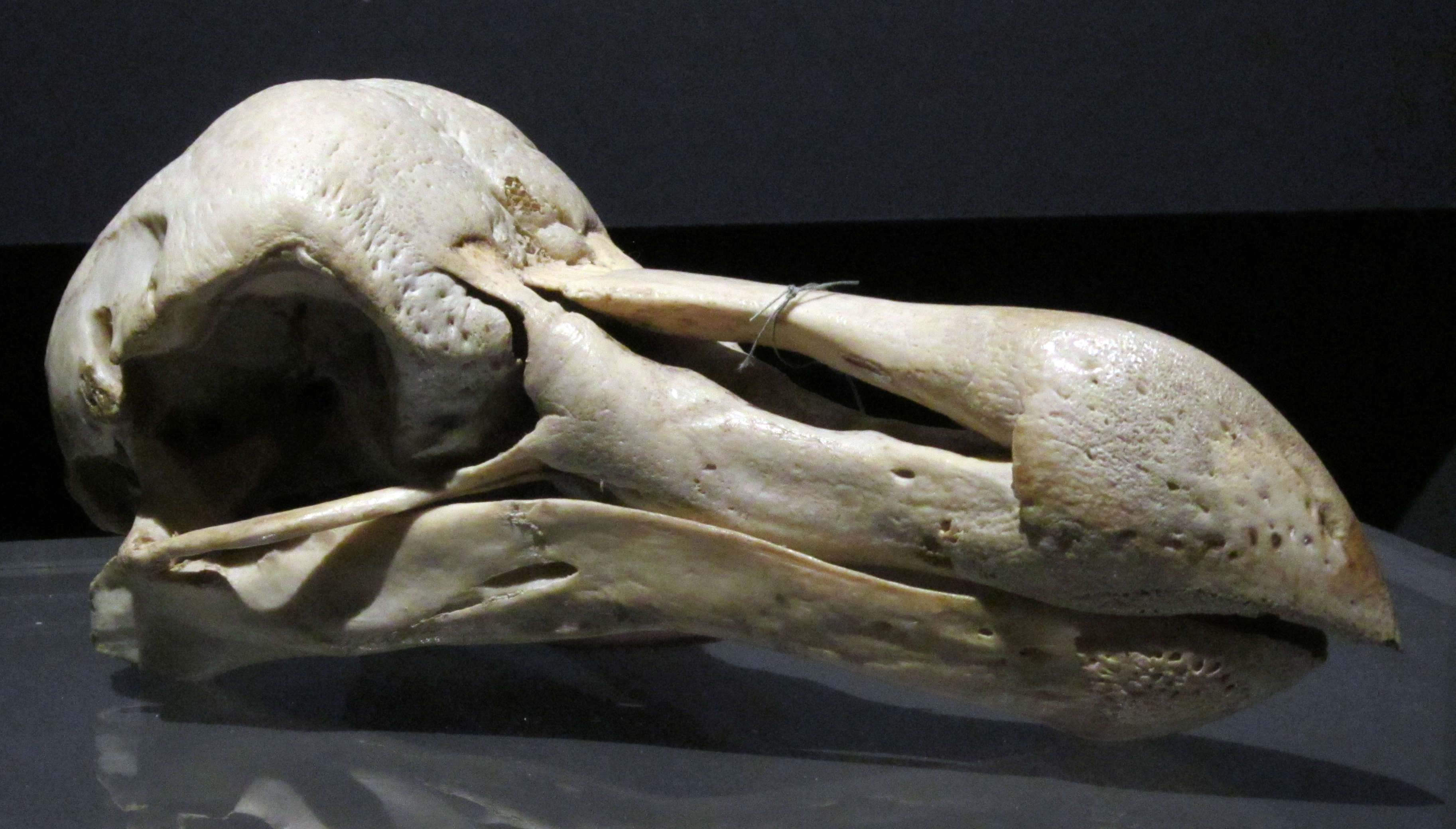|
Réunion Harrier
The Réunion harrier or Réunion marsh harrier (''Circus maillardi'') is a bird of prey belonging to the marsh harrier group of harriers. It is now found only on the Indian Ocean island of Réunion, although fossil material from Mauritius has been referred to this species. It is known locally as the ''papangue'' or ''pied jaune''. The Malagasy harrier (''C. macrosceles'') of Madagascar and the Comoro Islands was previously treated as a subspecies of this bird but is increasingly regarded as a separate species. The Réunion harrier appears to be declining in numbers and it is classed as an endangered species. Description It is about 42–55 cm long; the female is around 3–15% larger than the male.Ferguson-Lees, James & David A. Christie (2001) ''Raptors of the World'', Christopher Helm, London. The male has a blackish head and back with white streaks. The underparts, underwings and rump are white and the tail is grey. The wings are grey and black with a white leading e ... [...More Info...] [...Related Items...] OR: [Wikipedia] [Google] [Baidu] |
Jules Verreaux
Jules Pierre Verreaux (24 August 1807 – 7 September 1873) was a French botanist and ornithologist and a professional collector of and trader in natural history specimens. He was the brother of Édouard Verreaux and nephew of Pierre Antoine Delalande. Career Verreaux worked for the family business, Maison Verreaux, established in 1803 by his father, Jacques Philippe Verreaux, at Place des Vosges in Paris, which was the earliest known company that dealt in objects of natural history. The company funded collection expeditions to various parts of the world. Maison Verreaux sold many specimens to the Muséum National d'Histoire Naturelle to add to its collections. In 1830, while travelling in modern-day Botswana, Verreaux witnessed the burial of a Tswana warrior. Verreaux returned to the burial site under cover of night to dig up the African's body where he retrieved the skin, the skull and a few bones. Verreaux intended to ship the body back to France and so prepared and preser ... [...More Info...] [...Related Items...] OR: [Wikipedia] [Google] [Baidu] |
BirdLife International
BirdLife International is a global partnership of non-governmental organizations that strives to conserve birds and their habitats. BirdLife International's priorities include preventing extinction of bird species, identifying and safeguarding important sites for birds, maintaining and restoring key bird habitats, and empowering conservationists worldwide. It has a membership of more than 2.5 million people across 116 country partner organizations, including the Royal Society for the Protection of Birds, the Wild Bird Society of Japan, the National Audubon Society and American Bird Conservancy. BirdLife International has identified 13,000 Important Bird and Biodiversity Areas and is the official International Union for Conservation of Nature’s Red List authority for birds. As of 2015, BirdLife International has established that 1,375 bird species (13% of the total) are threatened with extinction ( critically endangered, endangered or vulnerable). BirdLife International p ... [...More Info...] [...Related Items...] OR: [Wikipedia] [Google] [Baidu] |
James Greenway
James Cowan Greenway (April 7, 1903 – June 10, 1989) was an American ornithologist. An eccentric, shy, and often reclusive man, his survey of extinct and vanishing birds provided the base for much subsequent work on bird conservation. Early years Greenway was born in New York City, though grew up on the Lauder Greenway Estate in Greenwich, Connecticut, with his brothers G. Lauder Greenway and Gilbert Greenway, as the son of James Greenway Sr., founder of the Yale School of Public Health. He is also a grandson of George Lauder and a great-grandson of George Lauder, Sr. He was educated at Phillips Exeter Academy, graduating in 1922, and graduated from Yale University in 1926 with a Bachelor of Arts degree. He then worked for a few years as a reporter for the '' Brooklyn Eagle'' newspaper. Expeditions and research Expeditions with Delacour In 1929 Greenway became a partner in the Franco-Anglo-American Zoological Expedition to Madagascar. The expedition was sponsored by t ... [...More Info...] [...Related Items...] OR: [Wikipedia] [Google] [Baidu] |
Metacarpals
In human anatomy, the metacarpal bones or metacarpus form the intermediate part of the skeleton, skeletal hand located between the phalanges of the fingers and the carpal bones of the wrist, which forms the connection to the forearm. The metacarpal bones are analogous to the metatarsal bones in the foot. Structure The metacarpals form a transverse arch to which the rigid row of distal carpal bones are fixed. The peripheral metacarpals (those of the thumb and little finger) form the sides of the cup of the palmar gutter and as they are brought together they deepen this concavity. The index metacarpal is the most firmly fixed, while the thumb metacarpal articulates with the trapezium and acts independently from the others. The middle metacarpals are tightly united to the carpus by intrinsic interlocking bone elements at their bases. The ring metacarpal is somewhat more mobile while the fifth metacarpal is semi-independent.Tubiana ''et al'' 1998, p 11 Each metacarpal bone consists o ... [...More Info...] [...Related Items...] OR: [Wikipedia] [Google] [Baidu] |
Tibia
The tibia (; ), also known as the shinbone or shankbone, is the larger, stronger, and anterior (frontal) of the two bones in the leg below the knee in vertebrates (the other being the fibula, behind and to the outside of the tibia); it connects the knee with the ankle. The tibia is found on the medial side of the leg next to the fibula and closer to the median plane. The tibia is connected to the fibula by the interosseous membrane of leg, forming a type of fibrous joint called a syndesmosis with very little movement. The tibia is named for the flute ''tibia''. It is the second largest bone in the human body, after the femur. The leg bones are the strongest long bones as they support the rest of the body. Structure In human anatomy, the tibia is the second largest bone next to the femur. As in other vertebrates the tibia is one of two bones in the lower leg, the other being the fibula, and is a component of the knee and ankle joints. The ossification or formation of the bone ... [...More Info...] [...Related Items...] OR: [Wikipedia] [Google] [Baidu] |
Tarsometatarsus
The tarsometatarsus is a bone that is only found in the lower leg of birds and some non-avian dinosaurs. It is formed from the fusion of several bones found in other types of animals, and homologous to the mammalian tarsus (ankle bones) and metatarsal bones (foot). Despite this, the tarsometatarsus of birds is often referred to as just the shank, tarsus or metatarsus. Tarsometatarsal fusion occurred in several ways and extents throughout bird evolution. Specifically, in Neornithes (modern birds), although the bones are joined along their entire length, the fusion is most thorough at the distal (metatarsal) end. In the Enantiornithes, a group of Mesozoic avialans, the fusion was complete at the proximal (tarsal) end, but the distal metatarsi were still partially distinct. While these fused bones are best known from birds and their relatives, avians are neither the only group nor the first to possess tarsometatarsi. In a remarkable case of parallel evolution, they were also pres ... [...More Info...] [...Related Items...] OR: [Wikipedia] [Google] [Baidu] |
Hans Gadow
Hans Friedrich Gadow (8 March 1855 – 16 May 1928) was a German-born ornithologist who worked in Britain. His work on the classification of birds based on anatomical and morphological characters was influential and made use of by Alexander Wetmore in his classification of North American birds. Gadow was born in Stary Kraków (Pomerania), the son of an inspector of the Prussian royal forests. He studied at the universities of Berlin, Jena and Heidelberg. At Jena he studied under Ernst Haeckel and at Heidelberg University under the anatomist Karl Gegenbaur. After graduation he travelled to the Natural History Museum in London in 1880 at the request of Albert Günther, to work on the museum's ''Catalogue of Birds''. Gadow also established the first new sequence of bird orders and families that departed from earlier works in being based on phylogenetic principles based on a comparison of anatomical and morphological features and made use of the studies made by Max Fürbringer. This se ... [...More Info...] [...Related Items...] OR: [Wikipedia] [Google] [Baidu] |
Alfred Newton
Alfred Newton Fellow of the Royal Society, FRS HFRSE (11 June 18297 June 1907) was an England, English zoology, zoologist and ornithology, ornithologist. Newton was Professor of Comparative Anatomy at Cambridge University from 1866 to 1907. Among his numerous publications were a four-volume ''Dictionary of Birds'' (1893–6), entries on ornithology in the Encyclopædia Britannica (9th edition) while also an editor of the journal ''Ibis (journal), Ibis'' from 1865 to 1870. In 1900 he was awarded the Royal Medal of the Royal Society and the Linnean Medal, Gold Medal of the Linnaean Society. He founded the British Ornithologists Union. Life Alfred Newton was born near Geneva in Switzerland, the fifth son of William Newton (MP for Ipswich), William Newton of Elveden Hall in Suffolk, Member of Parliament (United Kingdom), Member of Parliament (MP) for ; his mother Elizabeth (1789–1843) was the daughter of Richard Slater Milnes, MP for . The family wealth was founded on sugar pla ... [...More Info...] [...Related Items...] OR: [Wikipedia] [Google] [Baidu] |
Dodo And Other Extinct Birds Plate 33
The dodo (''Raphus cucullatus'') is an extinct flightless bird that was endemic to the island of Mauritius, which is east of Madagascar in the Indian Ocean. The dodo's closest genetic relative was the also-extinct Rodrigues solitaire. The two formed the subfamily Raphinae, a clade of extinct flightless birds that were a part of the family which includes pigeons and doves. The closest living relative of the dodo is the Nicobar pigeon. A white dodo was once thought to have existed on the nearby island of Réunion, but it is now believed that this assumption was merely confusion based on the also-extinct Réunion ibis and paintings of white dodos. Subfossil remains show the dodo was about tall and may have weighed in the wild. The dodo's appearance in life is evidenced only by drawings, paintings, and written accounts from the 17th century. Since these portraits vary considerably, and since only some of the illustrations are known to have been drawn from live specimens, the d ... [...More Info...] [...Related Items...] OR: [Wikipedia] [Google] [Baidu] |
Rivière Des Remparts – Rivière Langevin Important Bird Area
Rivière des Remparts – Rivière Langevin Important Bird Area (IBA) is a 7000 ha tract of land on the island of Réunion, a Overseas departments and territories of France, French territory in the western Indian Ocean. Description The IBA lies at the southern end of the island in the communes of France, commune of Saint-Joseph, Réunion, Saint Joseph, extending over a wide altitude range of 100–2320 m above sea level. It comprises the river canyon, gorges of the Rivière des Remparts and the Rivière Langevin which extend southwards from the western side of the volcano, volcanic Piton de la Fournaise massif to the sea at the town of Saint-Joseph. The gorges are separated by a narrow strip of cultivated plateau and a narrow uncultivated ridge. The site contains native plant community, plant communities, including evergreen lowland forest, Montane ecology#Montane forests, mountain forest, alpine shrubland and rocky cliffs. Birds The site has been identified by BirdLif ... [...More Info...] [...Related Items...] OR: [Wikipedia] [Google] [Baidu] |
Rivière Des Marsouins – Grand Étang Important Bird Area
Rivière des Marsouins – Grand Étang Important Bird Area is an tract of land on the island of Réunion, a French territory in the western Indian Ocean. Description The IBA lies on the north-eastern side of the island in the commune of Saint Benoît, extending over an altitude range of 83–1334 m above sea level. It comprises the steep-sided valley of the Rivière des Marsouins and the lake of Grand Étang. The valley drains the forested Bébour plateau, lying east of the Piton des Neiges, from the Caverne des Hirondelles, the highest point of the site, down to the island's eastern lowlands. The 30 ha Grand Étang (“Big Pond” in English), the largest lake on the island, was formed in an adjoining valley which was blocked by lava flowing from the volcano of Piton de la Fournaise. The site contains largely unmodified native plant communities, including evergreen lowland forest. Birds The site has been identified by BirdLife International as an Important Bird ... [...More Info...] [...Related Items...] OR: [Wikipedia] [Google] [Baidu] |
Ravine De La Grande Chaloupe Important Bird Area
Ravine de la Grande Chaloupe Important Bird Area is an 825 ha tract of land on the island of Réunion, a French territory in the western Indian Ocean. Description The IBA lies on the coast at the north-western end of the island, between the capital of Saint-Denis and the commune of La Possession. It encompasses the steep-sided valley that contains the village of La Grande Chaloupe at its mouth, along with the mouth of Ravine à Jacques nearby. Habitats include one of the last remnants of the island's native lowland forest, as well as secondary grassland and thickets of introduced vegetation, with some coastal cliffs and rocky shoreline. About 40% of the site is protected in the Grande Chaloupe Littoral Conservation Area. Birds The site has been identified by BirdLife International as an Important Bird Area (IBA) because it supports populations of Réunion harriers, Mascarene swiftlets, Mascarene paradise flycatchers, Réunion bulbuls, Mascarene white-eyes, Réunion o ... [...More Info...] [...Related Items...] OR: [Wikipedia] [Google] [Baidu] |




_dorsal_view.png)



